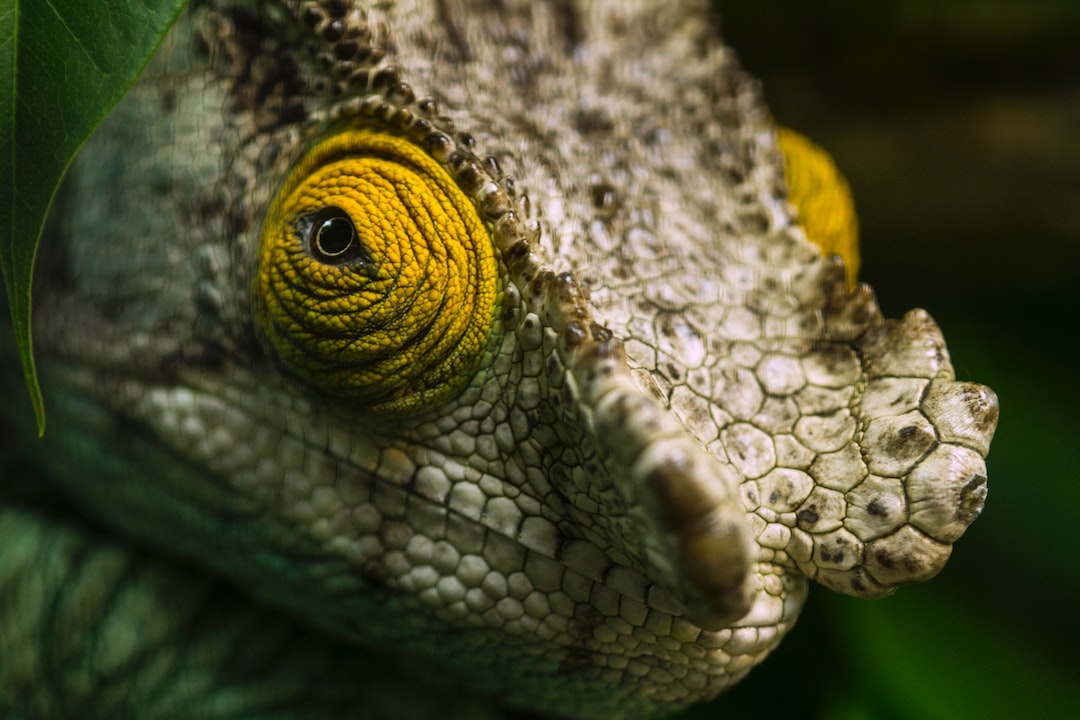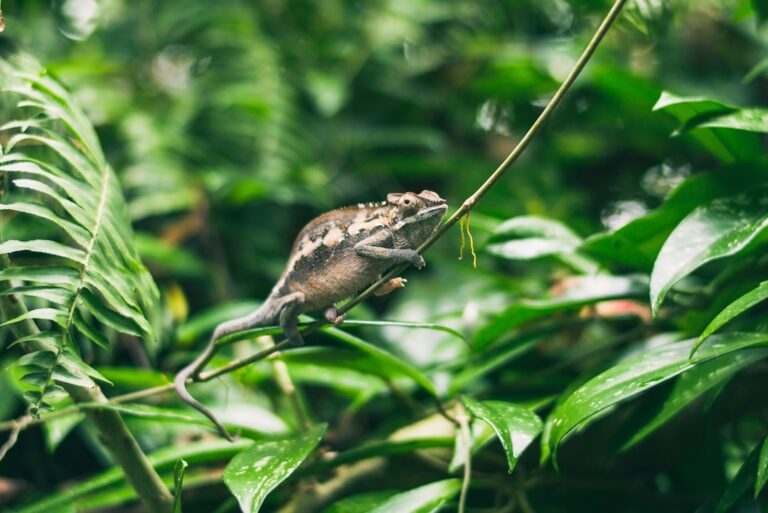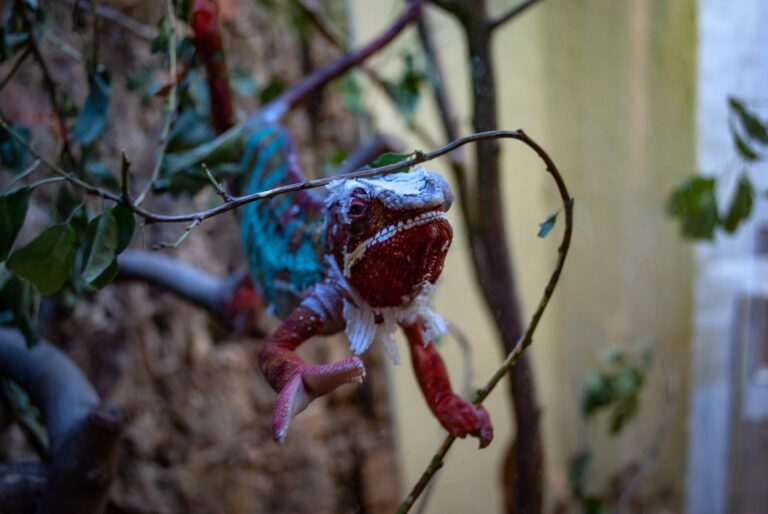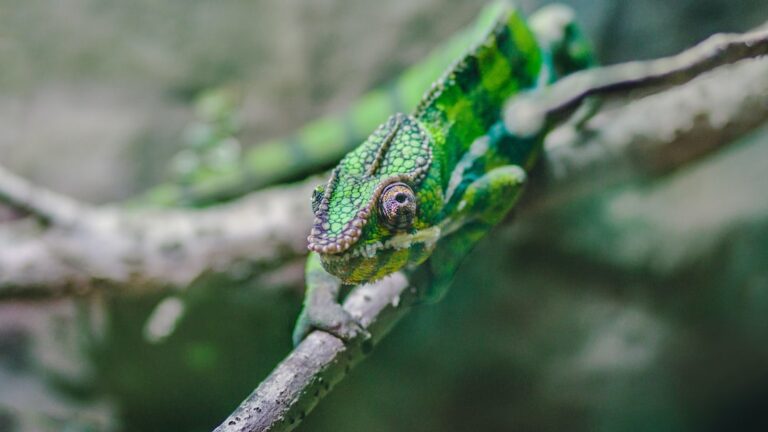Can Chameleons Kill Each Other?
Chameleons are fascinating creatures known for their ability to change color and blend into their surroundings. They belong to the family Chamaeleonidae and are native to Africa, Madagascar, and parts of southern Europe, Asia, and the Middle East. Chameleons have unique characteristics that set them apart from other reptiles. They have a prehensile tail, independently moving eyes, and a long, sticky tongue that they use to catch prey.
Chameleon behavior is also quite intriguing. They are solitary animals that spend most of their time in trees or shrubs. Chameleons are known for their territorial nature and can be quite aggressive towards other chameleons, especially males. They use various methods of communication to establish dominance and defend their territory.
Table of Contents
The Aggressive Nature of Chameleons
Chameleons are known for their aggressive behavior, particularly towards members of their own species. This aggression is primarily driven by the need to establish and defend territories. Male chameleons, in particular, are highly territorial and will fiercely defend their space from intruders.
One reason why chameleons can be aggressive is the limited availability of resources in their natural habitats. Food sources and suitable breeding sites are often scarce, leading to intense competition among chameleons. Aggression helps them secure these limited resources and ensure their survival.
Territorial Disputes Among Chameleons
Chameleons establish territories by marking them with scent secretions and visual displays. They use specialized glands located on their snouts or hind legs to release pheromones that communicate territorial ownership to other chameleons. Additionally, they may engage in visual displays such as head bobbing, color changes, and body inflation to assert dominance.
When a chameleon encounters another individual in its territory, it may engage in territorial disputes. These disputes can range from simple displays of aggression to physical combat. The intensity of the dispute depends on various factors, including the size and strength of the chameleons involved.
Fighting Techniques of Chameleons
Chameleons have several fighting techniques that they use to establish dominance and defend their territories. One common technique is the “push-up” display, where the chameleon raises its body off the ground and extends its throat pouch. This display makes the chameleon appear larger and more intimidating to its opponent.
Another fighting technique is biting. Chameleons have sharp teeth that they use to bite their opponents during fights. They may also use their long, sticky tongues to grab onto their opponent’s body and pull them off balance.
When Chameleons Attack Each Other
Chameleons may attack each other when they feel threatened or when their territories are invaded. There are several triggers that can cause chameleons to attack each other, including direct eye contact, intrusion into their personal space, or attempts to steal food or mates.
Before attacking, chameleons often communicate their intentions through a series of visual displays and body language. These displays can include color changes, head bobbing, hissing, and inflating their bodies. If these warning signals are ignored, the chameleon may escalate to physical combat.
Can Chameleons Kill Each Other?
While chameleon fights can be intense and result in injuries, it is rare for chameleons to kill each other during combat. Most fights end when one chameleon retreats or submits to the dominant individual. However, severe injuries such as bites or scratches can occur during fights and may lead to infections or other complications.
Factors That Affect the Severity of Chameleon Fights
Several factors can influence the severity of chameleon fights. One important factor is the size and strength of the chameleons involved. Larger and stronger individuals are more likely to win fights and establish dominance.
Environmental factors can also affect chameleon behavior and the intensity of fights. For example, chameleons may be more aggressive during mating season when competition for mates is high. Additionally, factors such as temperature, humidity, and availability of resources can impact chameleon behavior and territorial disputes.
The Role of Gender in Chameleon Fights
Gender plays a significant role in chameleon aggression and fighting behavior. Male chameleons are generally more aggressive than females, especially during the breeding season. This aggression is driven by the need to secure mates and ensure reproductive success.
Male chameleons often engage in combat with other males to establish dominance and gain access to females. They may use their physical attributes, such as size, strength, and coloration, to intimidate their opponents and assert their dominance.
How to Prevent Chameleon Aggression and Violence
While chameleon aggression is a natural behavior, there are steps that can be taken to prevent violence and ensure the well-being of these fascinating creatures. Providing each chameleon with its own enclosure is essential to avoid territorial disputes. Each enclosure should have ample space, hiding spots, and appropriate environmental conditions.
It is also important to provide a balanced diet for chameleons to minimize competition for food resources. Regular feeding schedules and ensuring that each chameleon receives an adequate amount of food can help reduce aggression.
Understanding Chameleon Behavior and Keeping Them Safe
In conclusion, chameleons are unique reptiles known for their ability to change color and blend into their surroundings. They have a territorial nature and can be quite aggressive towards other chameleons, especially males. Understanding chameleon behavior and the factors that contribute to aggression is crucial for keeping them safe and ensuring their well-being.
By providing chameleons with appropriate enclosures, a balanced diet, and a comfortable environment, we can minimize aggression and promote their overall health. It is important to respect their territorial nature and avoid situations that may trigger aggression. With proper care and understanding, chameleons can thrive in captivity and continue to captivate us with their fascinating behavior.
If you’re fascinated by the world of reptiles, you might be interested in an article on Reptile Friend titled “Can Chameleons Eat Watermelon?” It explores the dietary habits of chameleons and whether or not they can enjoy this juicy fruit. To learn more about this intriguing topic, check out the article here.







